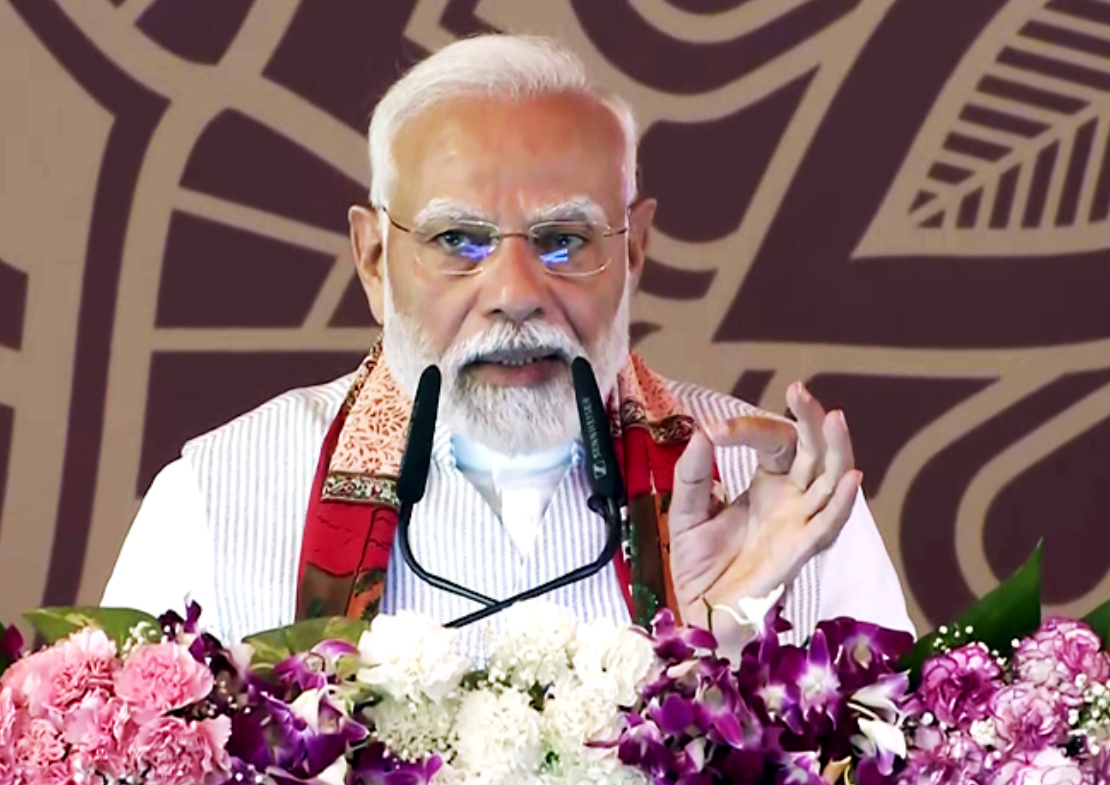After US President Donald Trump imposed a 25% tariff on Indian exports, India’s muted response has raised eyebrows globally. Is this silence a diplomatic strategy or a sign of weakness? This blog unpacks the BRICS angle, India-Russia oil trade, US hypocrisy, and why India can’t afford a trade war despite being the world’s 4th-largest economy. A deep dive into numbers, geopolitics, and government accountability.
Is India Weak or Just Being Smart?
India is the fourth-largest economy in the world today, yet it’s being mocked on the global stage. The most recent insult came from US President Donald Trump, who referred to India as a “dead economy” and hinted at doing deals with Pakistan, India’s long-time adversary. Trump also accused India of indirectly funding the Russia-Ukraine war due to its oil trade with Russia. The world noticed—and India stayed silent.
So, the question arises: why is India not reacting aggressively? Is it a sign of weakness, or is it part of a larger diplomatic strategy?
This article breaks it all down: the context, the contradictions, the economic risks, and what India’s silence may actually mean.
The BRICS Connection and Why the US is Targeting These Countries
Trump’s attacks have not been limited to Modi govt. China, Russia, and Brazil have also been at the receiving end. What’s common among these countries? They are all members of BRICS, a bloc working to end the dollar’s monopoly on global trade.
Currently, even if Modi wants to buy something from China, it must do so in US dollars. BRICS nations are planning to develop an alternate currency for trade, which threatens US control over global finance. Naturally, the US wants to ensure that any threat to the dollar is neutralized early.
US vs. Russia: The First Front
The US began by trying to isolate Russia. After the invasion of Ukraine, the US imposed more than 19,000 sanctions on Russia and froze its overseas assets. The idea was to cripple Russia’s economy. But Russia found a way to survive—by offering discounted oil to countries like India and China. This diverted their trade flow from Europe and gave Russia a new economic lifeline.
US vs. China: A Never-Ending Trade War
Trump’s trade war with China is infamous. Tariffs between the two countries escalated to absurd levels—up to 245%. A Chinese product worth $100 would cost $345 after US tariffs. While this hurt US consumers in the short term, the goal was to reduce dependence on cheap Chinese goods in the long run But Now This tariffs reduced to 30%
However, China retaliated with equal aggression. Despite the US being a $27 trillion economy and China at around $17.8 trillion, China matched every move, proving it couldn’t be bullied. Eventually, the US had to roll back many tariffs, realizing its economy was heavily dependent on Chinese manufacturing—from iPhones to luxury brands.
Brazil’s Diplomatic Jab
When the US imposed 50% tariffs on Brazil, the Brazilian government didn’t go on the offensive but didn’t stay silent either. Their President mocked Trump’s move and indirectly told him to “sit down and talk.” Even with a relatively small $2.2 trillion economy, Brazil showed it wouldn’t be intimidated.
The India Puzzle: The 25% Tariff Shock
When previous attempts failed, the US turned its focus toward India. On March 31, 2025, the Trump administration announced a 25% tariff on all Indian exports, effective from August 1. That means every Indian product entering the US becomes 25% more expensive. The reasoning? India’s continued oil trade with Russia, which the US claims helps fund the Ukraine war.

Russia was the first to respond, expressing confidence that India wouldn’t abandon it. Modi govt, interestingly, didn’t say anything for days. On August 5, India finally issued a press release—but instead of attacking Trump or the US, it simply clarified its position.
India’s Quiet but Calculated Response
Here’s what India clarified in its August 5 press statement:
- Initially, the US had supported Modi govt led oil imports from Russia. In fact, during 2020-21, when India began buying discounted Russian oil, it had the US’s tacit approval.
- Today, the UN as a collective trades more with Russia than modi govt does—yet India is the one being punished.
- The Modi government never named Trump or criticized the US. It simply stated facts, leaving the judgment to the global community.
This appears to be a calculated diplomatic move: let the world see the hypocrisy without openly confronting a superpower.
The Business of Russian Oil: Who Really Benefited?
Modi govt bought Russian oil at rates 25–50% cheaper than global markets. If oil from the Middle East cost $100, India was getting it at $50–$75. Reports suggest India saved around 37,000 crore rupees by doing so.
But here’s the twist—this cheap oil didn’t translate into cheaper petrol prices for Indian consumers. Instead, the government increased fuel taxes, earning massive profits:
- In 2019–20: Over 5 lakh crore
- In 2020–21: Over 7.2 lakh crore
- In 2021–22: Over 7.7 lakh crore
- In 2023–24: More than 7.5 lakh crore again
While the government profited from cheap oil, Indian exporters are now facing losses due to US tariffs. And the same government that eagerly collected fuel profits is now silent on compensating businesses hurt by these tariffs.
Why India Can’t React Like Russia or Brazil
Some say if Brazil and Russia can speak up, why can’t India? Here’s the hard truth: GDP is not everything. Russia’s economy is around $2 trillion, and India’s is nearly double that at $3.8 trillion. But India’s population is more than ten times that of Russia.
This is where GDP per capita comes in. The average income per person in India is still very low:
- US: ~$80,000
- China: ~$12,500
- Russia: ~$13,500
- Brazil: ~$10,300
- India: ~$2,940 (2025 data)
So while India’s total GDP looks strong, it doesn’t translate to individual financial strength. We’re not economically secure enough to afford a trade war with the US.
The Trade Dependence Equation
Let’s look at how much each BRICS nation depends on trade with the US:
- In 2024, the US exported goods worth $143 billion to China, and China exported $438 billion to the US. That’s a lot of mutual dependency.
- Brazil exports 12.5% of its total exports to the US. But it imports more than it exports, meaning the US loses more in case of a fallout.
- India exported $87.3 billion worth of goods to the US in 2024 and imported $41.5 billion. The imports are mostly tech services—Google, YouTube, Facebook, etc.—which India depends on.
So if Modi Govt picks a fight with the US, we lose more. Our exports will fall, and our people lose jobs. Meanwhile, the US can easily shift purchases elsewhere.
Why Silence May Be Smarter Than Screaming
By not reacting aggressively, India might be playing the long game. Diplomacy, after all, is not about who shouts louder—it’s about who wins in the end.
That said, Modi’s silence comes with a cost. The business community is hurting. Exporters are now faced with either selling at a loss or exiting the US market altogether. When profit was up, the government took all the credit. Now that there’s a loss, businesses are being left to suffer alone.
If the government was quick to tax cheap fuel, it should now also help those affected by tariffs. For example, a business exporting goods worth 100 rupees now faces a cost of 125 due to tariffs. Either the government supports that extra 25 rupees—or accepts responsibility for the damage its foreign policy has triggered.
Conclusion
India’s current strategy might seem weak at first glance, but it could be a sign of diplomatic maturity. Still, it raises legitimate concerns: when profits were booming, the government acted fast. Now that losses are mounting, why the silence?
This isn’t about BJP vs Congress. It’s about whether the Indian state truly protects its people and businesses when it matters most. And unless action is taken to support the exporters now paying the price, this will be remembered as a diplomatic failure—not a masterstroke.

